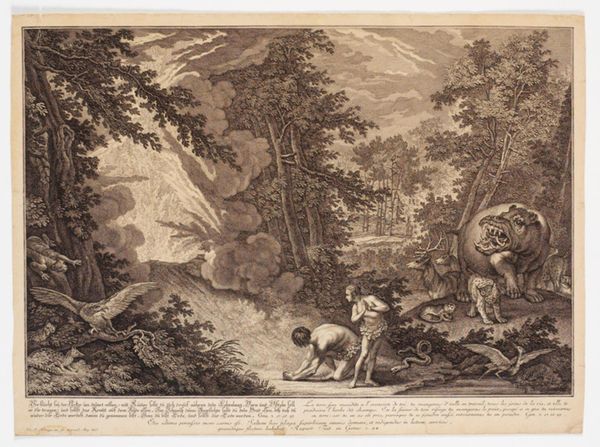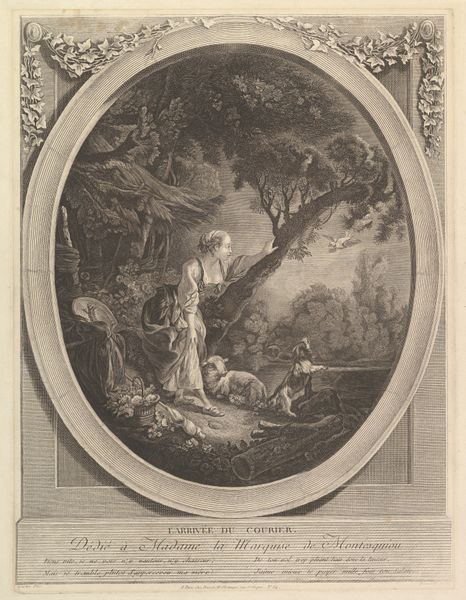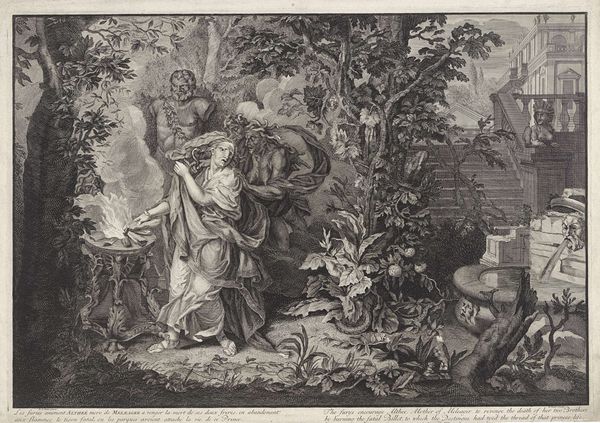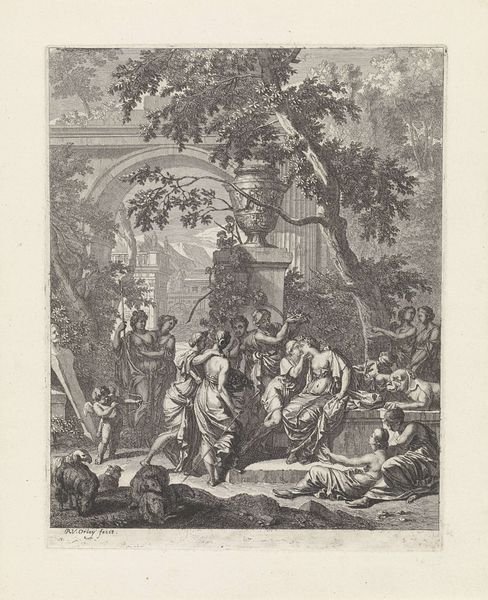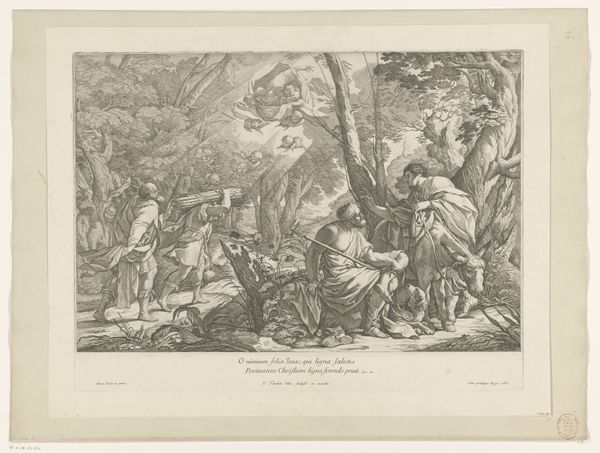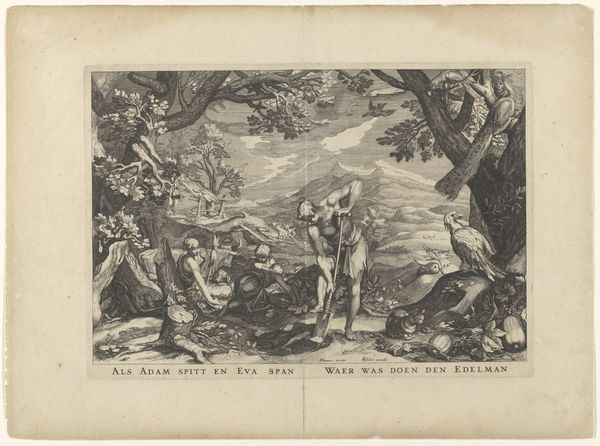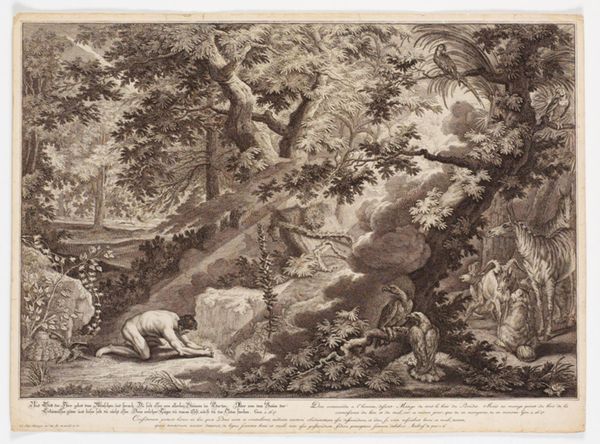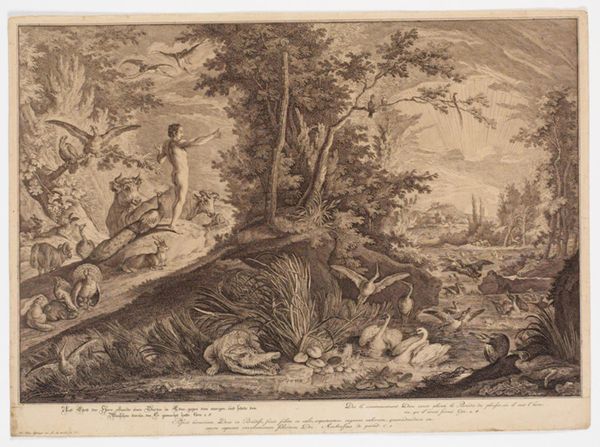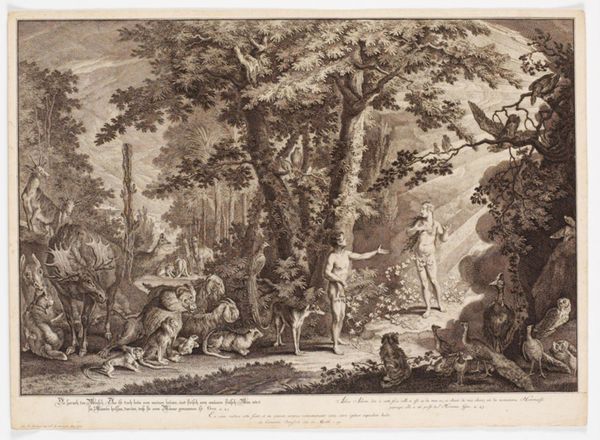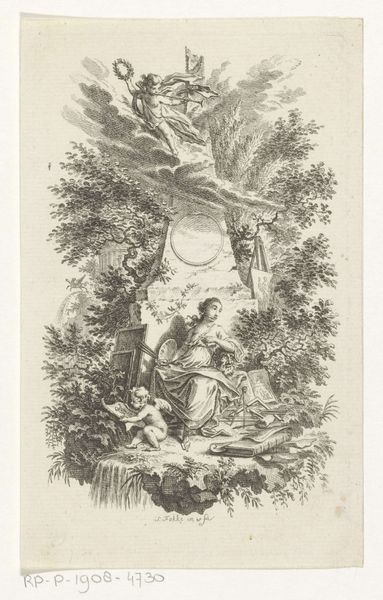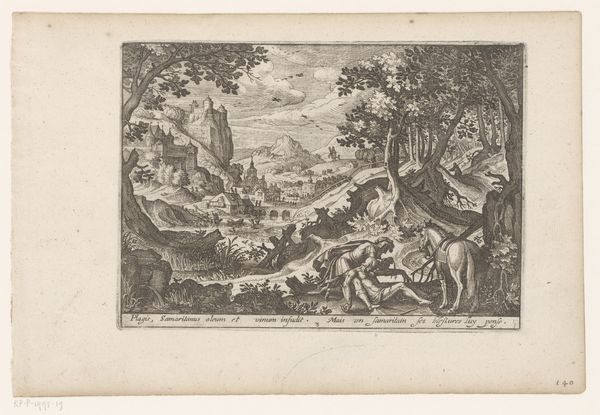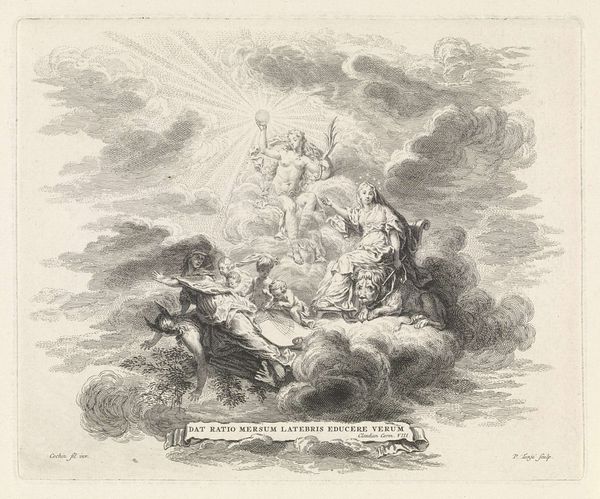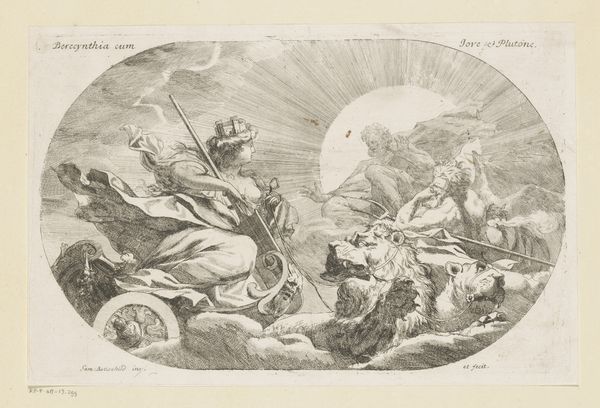
Dimensions: 393 mm (height) x 540 mm (width) (bladmaal)
Editor: This is "Adams skabelse" – "The Creation of Adam" – an 18th-century engraving by Johann Elias Ridinger, currently housed at the Statens Museum for Kunst. I'm struck by how…crowded it feels. Adam is surrounded by all this wildlife. What do you see in this piece? Curator: Beyond the immediate religious narrative, Ridinger's engraving opens a compelling window onto the complex relationships between humans and the natural world in the 18th century. Note how Adam is positioned within a carefully constructed landscape, a tableau teeming with animals – are they admiring, curious, or indifferent? Editor: I suppose I hadn’t thought about it in those terms – the animals seem…well, just there. Curator: Precisely. Consider this work through a postcolonial lens, bearing in mind Europe's expanding global presence at this time. Doesn't this seemingly idyllic depiction subtly reinforce a hierarchical view, positioning man—specifically, a European ideal of man—as the pinnacle of creation, inherently distinct from and dominant over the animal kingdom? Where do indigenous populations factor into this kind of representation? Editor: So, it's not just about Adam, but about how that image of Adam was being used to justify certain power structures? Curator: Exactly. By analyzing this image, we can begin to understand the ways in which art contributed to, and continues to reflect, complex social, political, and ethical questions surrounding identity, dominance, and the environment. Who gets to define “creation,” and for what purposes? Editor: I never would have thought of all that by myself. Thanks. Curator: It is always about making these historical artworks relevant to our present moment, making us reconsider our existing systems.
Comments
No comments
Be the first to comment and join the conversation on the ultimate creative platform.
